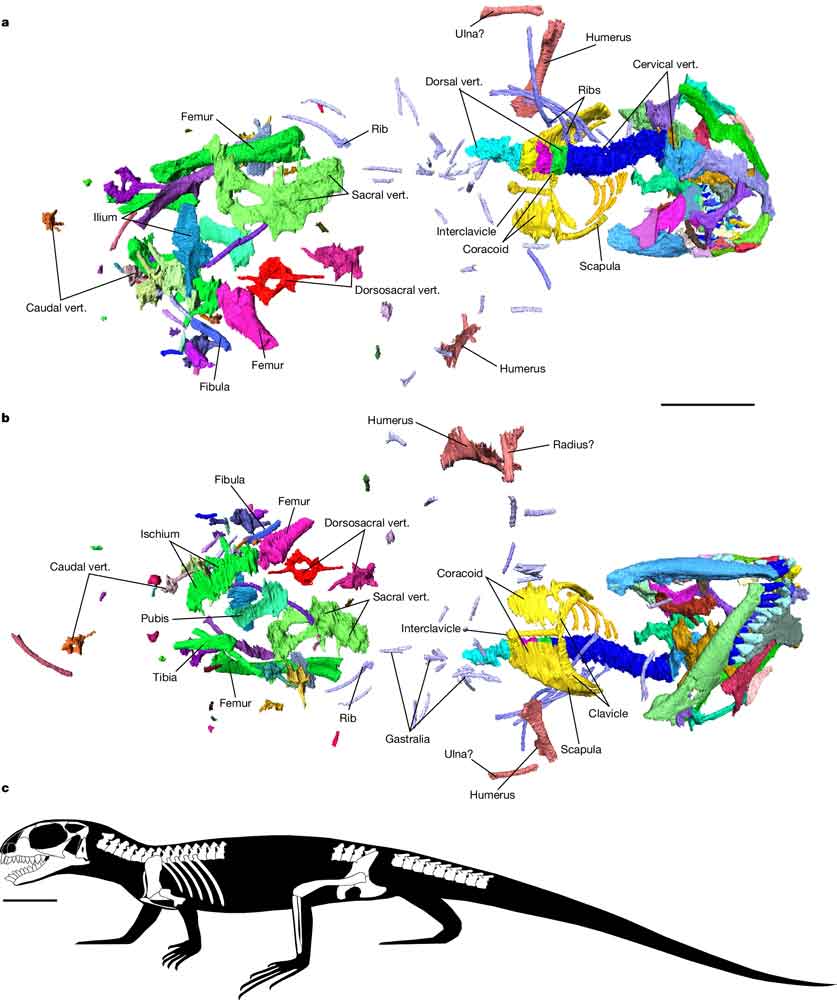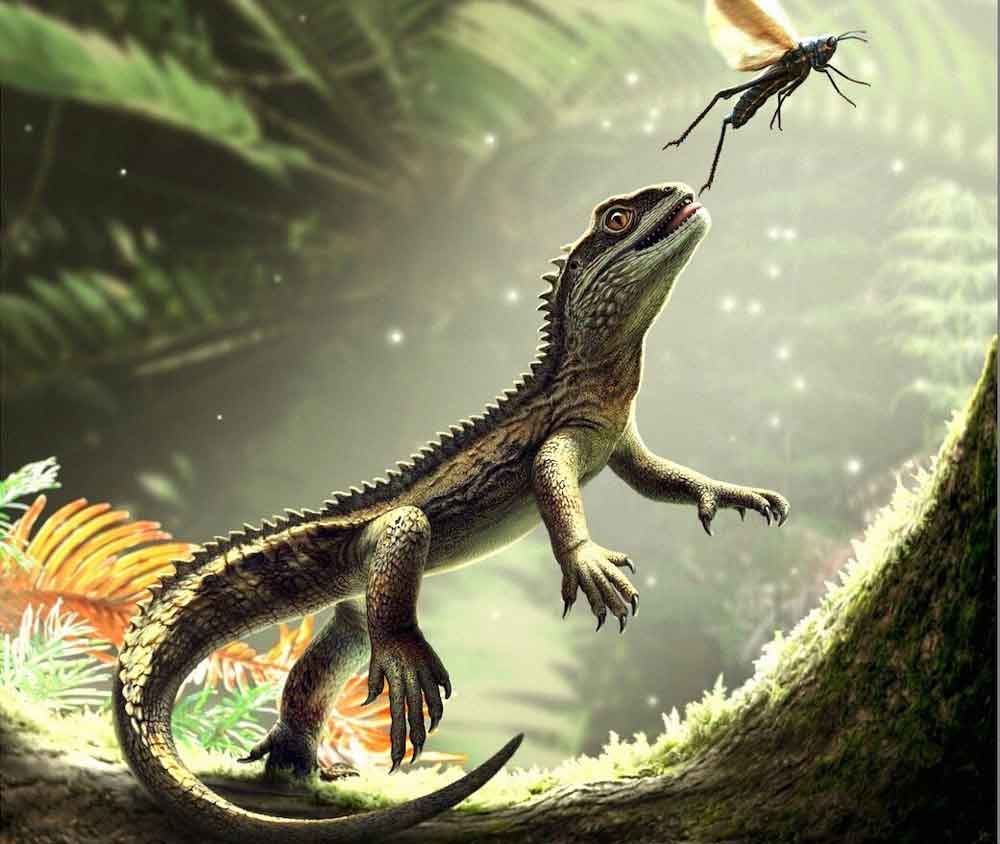Agriodontosaurus helsbypetrae means 'fierce toothed lizard from the Helsby rock' after the Helsby Sandstone Formation in which it was discovered.
An ancient species related to reptiles, lizards and the modern day tuatara (Sphenodon punctatus) of New Zealand is causing scientists to reexamine what makes a lizard a lizard. Or a snake a snake.
“The new fossil shows almost none of what we expected,” said Dan Marke, who led the project as part of his studies for the MSc in Paleobiology at Bristol. “It has no teeth on the palate, and no sign of any hinging. It does, though, have an open temporal bar, so one out of three. Not only this, but it possesses some spectacularly large teeth compared to its closest relatives.”

From the research paper: Three-dimensional reconstruction of the skeleton (voxel resolution of 26 μm; Methods) in dorsal (a) and ventral (b) views. c, Lateral reconstruction of A. helsbypetrae based on elements preserved in the holotype. Scale bars, 10 mm. Full details are provided in Extended Data Figs. 4–9. Colours denote individual segmentations of elements, or groups of elements that were segmented together. vert., vertebrae.
Dating of the fossil puts it back 242 million years, which was during the Middle Triassic. This was a time before the dinosaurs appeared. The skull of this animal is only 1.5cm in length, with the teeth barely visible. So the researchers made synchrotron CT scans using very powerful beamlines at the European Synchrotron Radiation Facility (France) and the Diamond Light Source (UK) to get even finer resolution. The scientists say the entire fossil fits in the palm of a human hand and with the newly acquired scanning data, the detail of the fossil became very clear. The scientists were able to see large triangular shaped teeth that they surmise were used to cut through the hard cuticles of their insect prey in much the same way as the modern day tuatara does.
Tuatara Largely Unchanged In 190 Million Years, New Fossil Shows
“The new animal is unlike anything yet discovered and has made us all think again about the evolution of the lizard, snakes and the tuatara,” Dan Marke, researcher with the School of Earth Sciences, University of Bristol, Bristol, UK and School of Geosciences, Grant Institute, University of Edinburgh, Edinburgh, UK, said in a statement announcing the research paper, which was published September 10 in the journal Nature. “We had to give it a name to distinguish it from everything else, and we chose Agriodontosaurus helsbypetrae, quite a mouthful, meaning ‘fierce toothed lizard from the Helsby rock’ after the Helsby Sandstone Formation in which it was discovered.”
“This specimen not only provides important information about the ancestral skull of all lepidosaurs but also builds on the growing knowledge that the tuatara, while often called a ‘living fossil’; belongs to a once-diverse order of ancient reptiles with a rich evolutionary history.”
The full research paper describing every detail of the fossil, “The oldest known lepidosaur and origins of lepidosaur feeding adaptations” can be read in the journal Nature.



